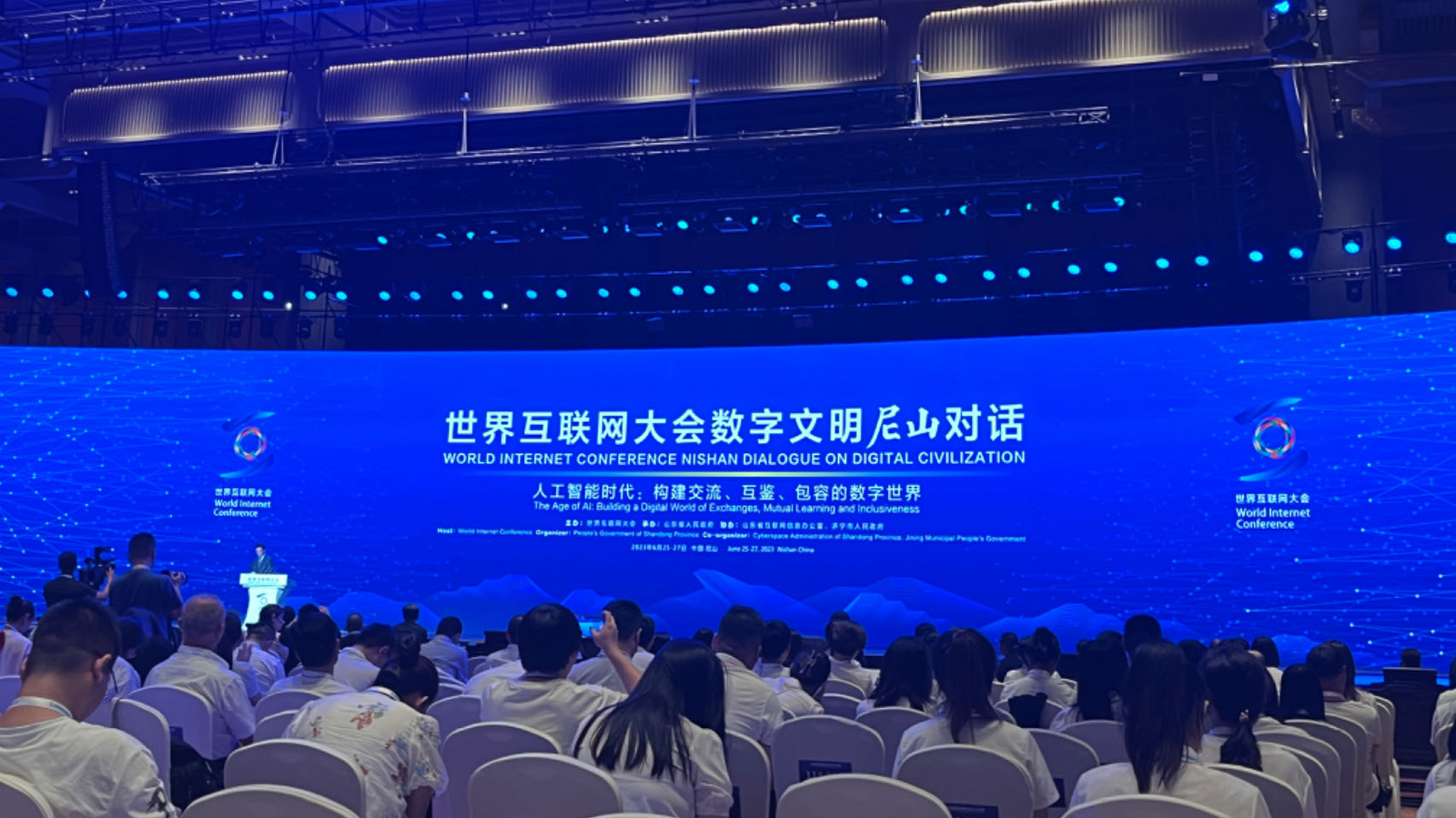Bart Selman, a professor at Cornell University and the former president of the Association for the Advancement of Artificial Intelligence, stated, “However, we see a big surprise today.”

Experts, academics, and businesspeople are exchanging ideas at the World Internet Conference Nishan Dialogue on Digital Civilization, which will be held in Qufu, a county-level city in Jining, Shandong Province, east China, from June 25 to 27. Topics covered include large language models, artificial generative intelligence (AGI), digital cooperation, and how AGI empowers different industries.
An artificial intelligence (AI) system trained to comprehend and produce text that resembles human speech is known as a large language model. Such a branch of machine learning, which has already shown to be extremely helpful, is what OpenAI’s ChatGPT is based on.
The chatbot was the fastest-growing consumer application, with an estimated 100 million active users just two months after launch. Although it’s not yet clear how to measure it, it appeared that the bot had attained artificial generative intelligence (AGI), a type of AI that can generate text and images.
Artificial generative intelligence (AGI) is predicted to exist in 20 to 40 years, possibly 40 years from now.
Bart Selman, a professor at Cornell University and the former president of the Association for the Advancement of Artificial Intelligence, stated, “However, we see a big surprise today.”
He continued, “This is completely unexpected, but the emergence of large language models and ChatGPT has broken through the barriers of language understanding.”
The potential of large language models to transform a variety of industries has generated a great deal of excitement.
According to Robin Li, chairman and CEO of Chinese online search giant Baidu, once the digital economy powered by large language models is integrated with the real economy, it will cause profound changes in economic and social development and industries.
Take an automobile’s design for instance. According to Li, large language models can produce designs automatically, cutting down on the time and expense of the research and development cycle.
According to Li, large-scale models won’t just be used to mimic people; they’ll also be used to find new places and push past boundaries that we haven’t yet crossed.
A large language model, according to Zhou Hongyi, chairman of the internet security company 360 Group, is like a “power plant” that can convert difficult-to-use big data from “raw resources” into “electricity,” thereby empowering various industries.
According to Zhou, large language models will be primarily used by governments, cities, businesses, and industries, so they must be secure, dependable, manageable, and simple to use.
According to Zhang Yong, the chairman and CEO of Alibaba Group, a similar standard also applies to China’s largest e-commerce company. Zhang Yong also added that AI should improve people’s well-being and assist in resolving actual issues.
A draught regulation on generative AI has been published in China, and it includes requirements for user privacy and corporate secrets.
EU legislators in June voted to change draft AI rules, prohibiting generative systems and mandating content disclosure. Walter Fumy, chairperson of CEN and CENELEC JTC 13, discussed Europe’s risk-based approach to AI systems, requiring conformity assessments before market entry.
He suggested network security for a safe and trustworthy AI system. Foreign entrepreneurs urged for digital cooperation, technological innovation, and standardized ethics to bridge the digital divide and empower various industries.
Mobile technology, according to John Hoffman, CEO of the Global System for Mobile Communications Association (GSMA), is a driving force behind the digital economy. He argued that all parties should work together to establish good legislative and regulatory frameworks that encourage innovation and investment in the 5G era.
According to Hou Shengli, vice president of Cisco Greater China, a new business model has been made possible by the “sharing economy,” which encourages resource recycling and efficient resource use. According to Hou, a connected, secure, and intelligent data network can aid in sustaining the sharing economy.
Jiang Tao, vice president of Intel Corporation, estimates that China’s digital economy will surpass 52 trillion yuan ($7.19 trillion) this year and double over the next ten years, reaching 50.2 trillion yuan ($6.94 trillion) in 2022. The business has faith in the digital economy in China.
Jiang said the company is hopeful about China’s improved development and is looking forward to working with its Chinese partners to produce win-win outcomes.